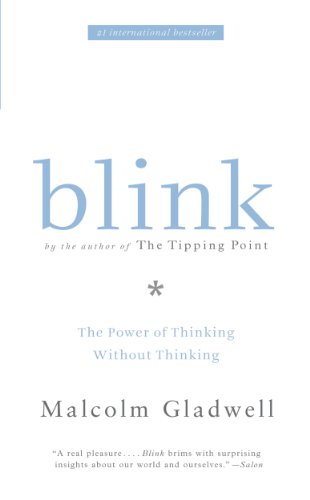

This article is an excerpt from the Shortform summary of "Blink" by Malcolm Gladwell. Shortform has the world's best summaries of books you should be reading.
Like this article? Sign up for a free trial here .
Is trusting your gut ever a good idea? Under what circumstances does trusting your instincts make sense?
There is indeed some truth to the “trust your gut” adage: intuitive, snap decisions are advantageous in some circumstances. But they can also lead to disaster in others.
Here’s why following your instincts is a double-edged sword.
Success and Failure in Snap Judgments—2 Examples
In his book Blink: The Power of Thinking Without Thinking, Malcolm Gladwell describes two examples of snap decision-making in detail. One of these examples showcases the benefits of following your instincts and making intuitive, on-the-fly decisions; the other example shows how these decisions can be disastrous.
Snap Decision Success: A Battle Between Military Philosophies
Which approach works best in war? Surely methodical planning will beat snap decisions every time? Gladwell discusses the Millennium Challenge war simulation to show that split-second decision-making can beat careful planning in a war context.
The Millennium Challenge was a 2002 war game planned by the military’s Joint Forces Command (JFCOM). The military uses these games to test new strategies.
There were two teams in the Millennium Challenge:
- Blue Team: the U.S. and its allies
- Red Team: the enemy. JFCOM asked retired Marine Corps General Paul Van Riper to play the part of a rogue military commander threatening to start a war in the Persian Gulf.
The two teams had very different philosophies of war.
Blue Team operated on the assumption that with enough information, you can fight a war in a rational and systematic way. They took into account the enemy’s political, economic, cultural, and institutional environments, not just their military system. Blue Team had the most sophisticated resources and systems of any army in history.
Red Team operated on the assumption that war is, by its nature, unpredictable. You can’t fight an unpredictable war with a systematic approach. They believed that war requires spur-of-the-moment decisions that change according to changing situations.
Red Team did their analysis (conscious decision-making) before the battle began so that once it started, they could rely on their instincts (unconscious decision-making). The focus was less on systems and rigid strategies, more on using the wisdom and good sense of the team’s individuals.
| The Benefits of Spontaneity in Military Strategy Military and martial arts strategists have separately argued for the importance of spontaneity and flexibility (snap judgments) in military strategy. Renowned Prussian army general Helmuth von Moltke the Elder (1800-1891), for example, commented that “no plan of operations extends with certainty beyond the first encounter with the enemy’s main strength,” which is widely quoted today as the pithier “no plan survives contact with the enemy.” Boxer Mike Tyson famously expressed the same sentiment before his fight with Evander Holyfield, saying, “Everybody has a plan until they get punched in the mouth.” Fighter pilot and military strategist John Boyd, who was a strong influence on Van Riper’s thinking in the Millennium Challenge, formulated a decision-making model that combines the stability of long-term thinking with spontaneous decision-making in real time. Boyd’s OODA (Observe-Orient-Decide-Act) loop captures a dynamic process in which decision-makers constantly update the information they have and adapt their actions accordingly. One of Boyd’s key insights was that to succeed in war, you have to carry out this process faster than the enemy (this way, you’re already acting on updated information by the time the enemy has a chance to update theirs). This pressure to make fast decisions favors Gladwell-style snap judgments rather than ponderous logical analysis. |
In the battle, Red Team struck first in a surprise attack, knocking out half of Blue Team’s ships with cruise missiles. If this had been a real battle, 20,000 lives would have been lost before Blue Team fired its first shot.
Red Team relied on the power of their snap decisions, and these decisions were ultimately much more effective than the well-informed, meticulously planned decisions of Blue Team.
In that first version of the Millennium Challenge, Red Team won. However, the JFCOM staff decided to ignore Red Team’s win and start the game over. They gave Red Team a script and told them to stick to it, leaving no room for spontaneous decisions. Van Riper claims that if JFCOM didn’t like the result of a battle, they would just run the simulation again. (Shortform note: The new rules prohibited Red Team from shooting at approaching aircraft from the ground, from hiding their weapons from Blue Team’s attacks, and from using chemical warfare. Blue Team was also allowed to use experimental technology that still doesn’t exist in reality 20 years later.)
With Red Team constrained by their script, Blue Team won the second round easily, and the analysts at JFCOM and the Pentagon rejoiced over the victory of their detailed plan, without having learned a lesson from the previous loss to Red Team’s adaptable plan. This was the flawed plan implemented in the US invasion of Iraq in 2003.
| Inspiration for Van Riper’s Approach Van Riper told the New York Times in 2008 that his inspiration for the swarm-like attack on Blue Team came from nature. He thought of the way that ant colonies and wolf packs coordinate to take down larger and stronger prey. Taking inspiration from nature wasn’t quite as successful for the CIA during the Cold War. They spent millions of dollars on “Acoustic Kitty,” a cat fitted with listening devices and trained to spy on the Soviet Embassy. Acoustic Kitty was released near the Embassy but was immediately run over by a passing car, leading the CIA to abandon the project. |
Snap Decision Failure: The Amadou Diallo Case
Snap judgments can fail catastrophically in stressful situations. To show how this happens, Gladwell discusses a 1999 police encounter with Amadou Diallo, a Guinean immigrant to the US. This encounter ended when four New York City Police officers fired 41 shots at Diallo in the vestibule outside his apartment. The officers mistook him for a rape suspect, and they mistakenly thought he was pulling a gun when they approached.
While many view this tragedy as an instance of racial profiling, Gladwell presents it as a snap judgment failure. The officers thin-sliced in the moments before the first shot was fired, and the process went terribly wrong. Usually, we can easily tell the difference between someone who’s terrified and someone who’s dangerous. Why couldn’t the officers?
Gladwell argues that stress led the officers to make poor snap judgments:
- Deciding whether to fire a gun is rare for officers. In contrast to what we see on TV, over 90% of officers go their entire careers without shooting. (Shortform note: A 2016 Pew Research Center survey estimated this number at 73%.)
- Stress caused the officers to misread the situation. Officer Carroll saw Diallo getting some fresh air on his stoop; Carroll thought he looked suspicious. He couldn’t understand why someone would be outside after midnight in that neighborhood, unless he was the lookout for a robber.
- Stress impaired their ability to read Diallo’s facial expressions. Gladwell refers to this impairment as “temporary autism.” When the police car approached, Diallo turned to the side and reached into his pocket for his wallet—he thought he was being robbed and was terrified. Carroll and his team couldn’t read his facial cues—they thought he was reaching for a gun and was dangerous.
- Stress distorted and narrowed the officers’ vision. When your vision is restricted, the black edge of a wallet looks a lot like a gun—and if you see a gun, you’re not going to take your eyes off it. Part of the reason Carroll couldn’t read the terror in Diallo’s face was that he wasn’t looking at Diallo’s face.
- Stress made the officers behave aggressively. When your heart rate increases, your midbrain (the intuitive, primitive part of your brain) takes over. You can’t think clearly and you become aggressive.
The officers were charged with second-degree murder, but were found not guilty.
(Shortform note: It’s also likely that racial profiling did play a role in Diallo’s death. In Biased, Jennifer Eberhardt showed that priming with black faces leads to faster identification—or misidentification—of a weapon: When people are shown a blurry picture of a gun that comes into focus slowly, they’re faster to recognize the gun if they’ve been shown a split-second image of a black face than if they’ve been shown a white face or no face at all.)
This tragic story tells us that we should beware of trusting our snap judgments in stressful situations. Even if you feel pressure to make a fast decision, it’s best to slow down for a beat before doing something irreversible.
| The Problems With Gladwell’s Notion of “Temporary Autism” Gladwell labels the stress-induced impairment in recognizing facial expressions “temporary autism,” arguing that people who make bad decisions in moments of stress are functioning as though they’re temporarily autistic. This label oversimplifies and mischaracterizes autism. First, it’s unclear why Gladwell has singled out autism for the analogy when difficulties reading facial emotion have also been found in temporal lobe epilepsy, ADHD, anxiety disorders, major depression, and Parkinson’s disease. Difficulties in recognizing facial emotion are also more nuanced than he allows. People experiencing major depression, for example, are more likely to perceive neutral expressions as sad. People with anxiety are extra good at recognizing fear. Researchers have also uncovered specific chemical influences: MDMA, for example, impairs people’s recognition of anger and fear, while oxytocin improves our recognition of happiness. Gladwell contrasts autistic people with “normal” people, a problematic binary. (A more neutral way to talk about this distinction is “neurotypical” vs. “neurodivergent.”) He also assumes that the reader isn’t autistic, using phrases like “you and I” to describe neurotypical behavior. Finally, the choice of “temporary autism” as a metaphor is particularly concerning when it’s used in the context of police brutality, as autistic people, on the whole, are the victims of violence far more often than the perpetrators. |
———End of Preview———

Like what you just read? Read the rest of the world's best summary of "Blink" at Shortform . Learn the book's critical concepts in 20 minutes or less .
Here's what you'll find in our full Blink summary :
- How you can tell if a marriage will fail, within 3 minutes
- Why your first impressions are usually surprisingly accurate
- The dark side to making first impressions, and how to avoid the,






